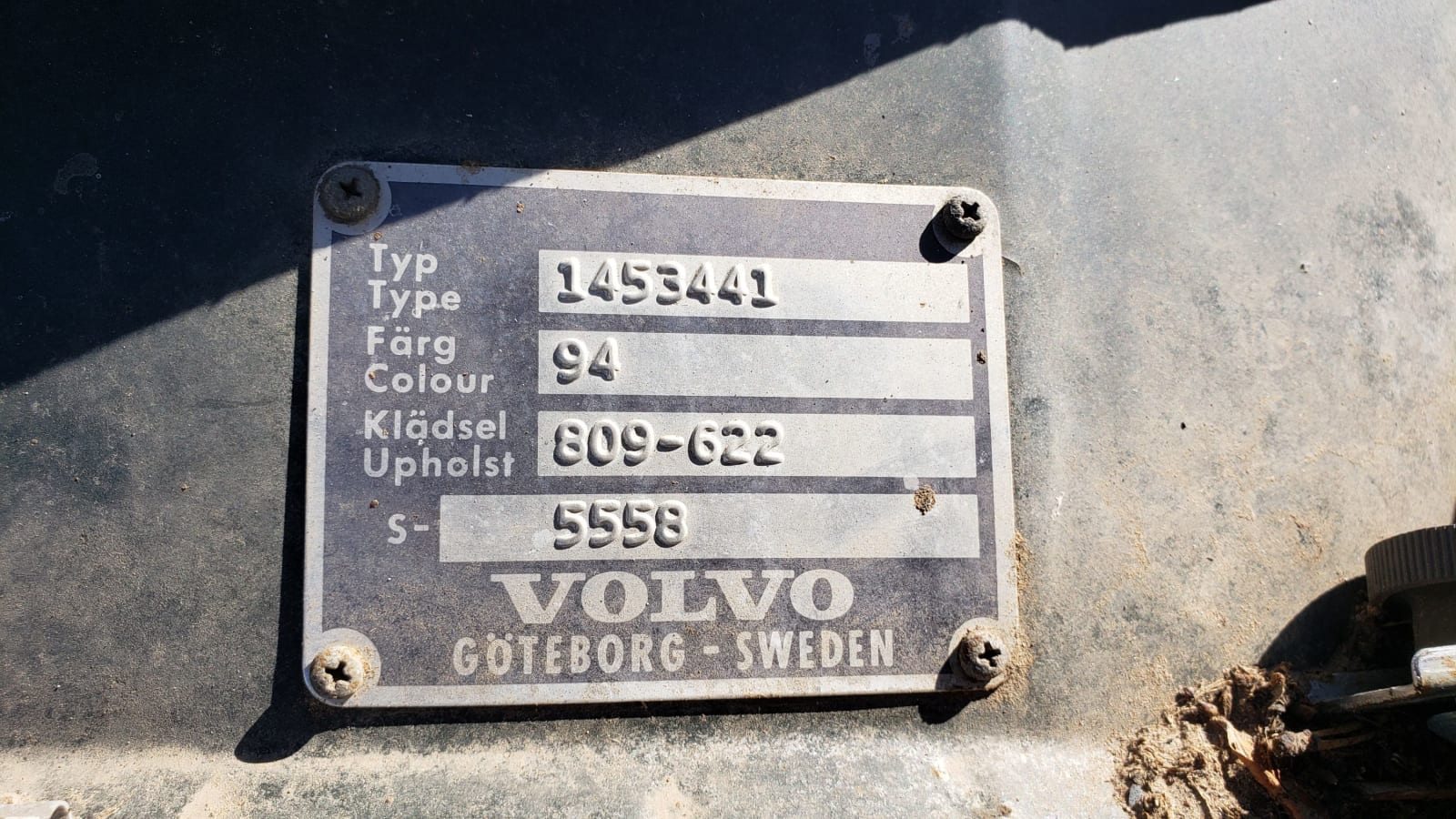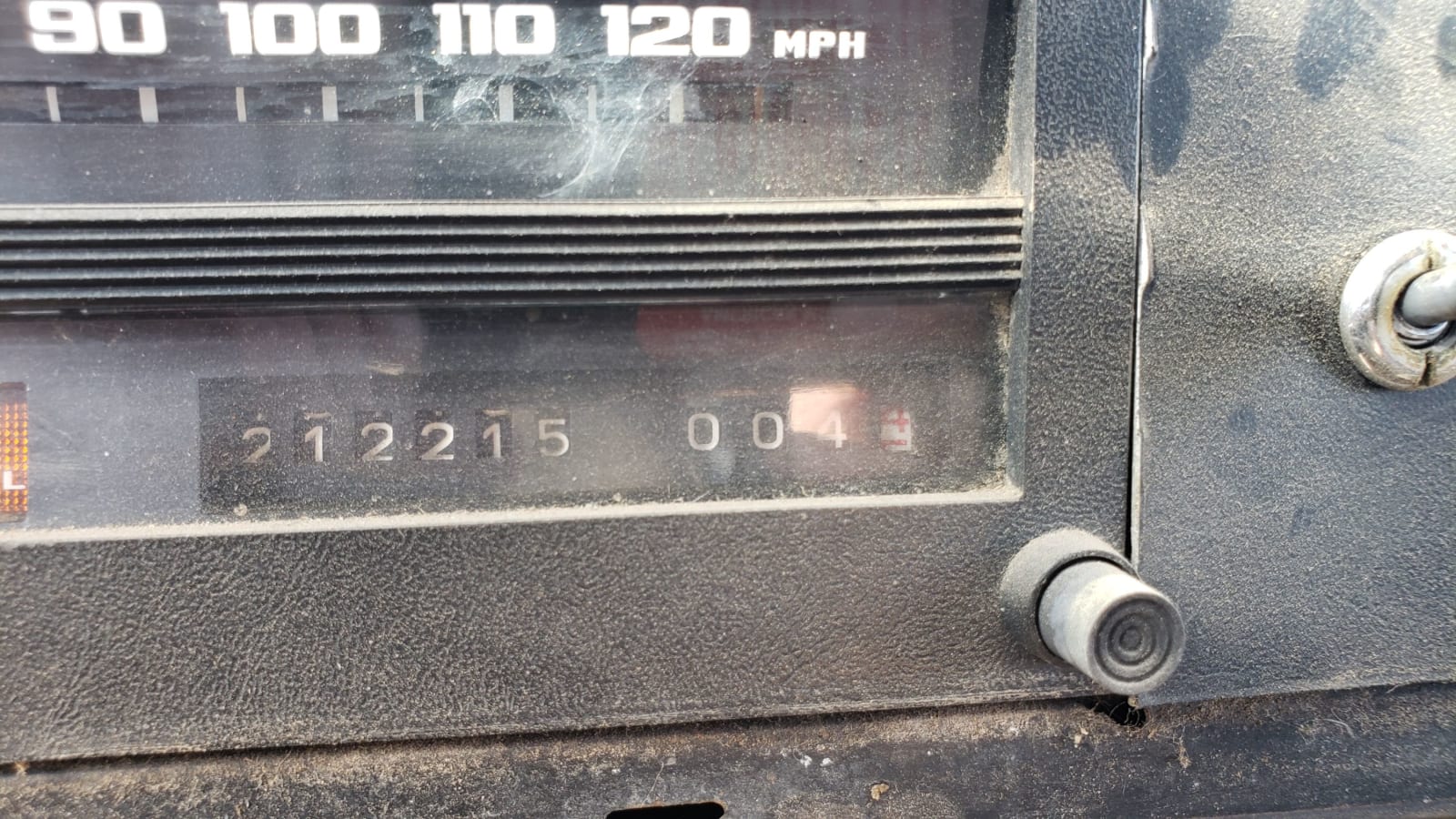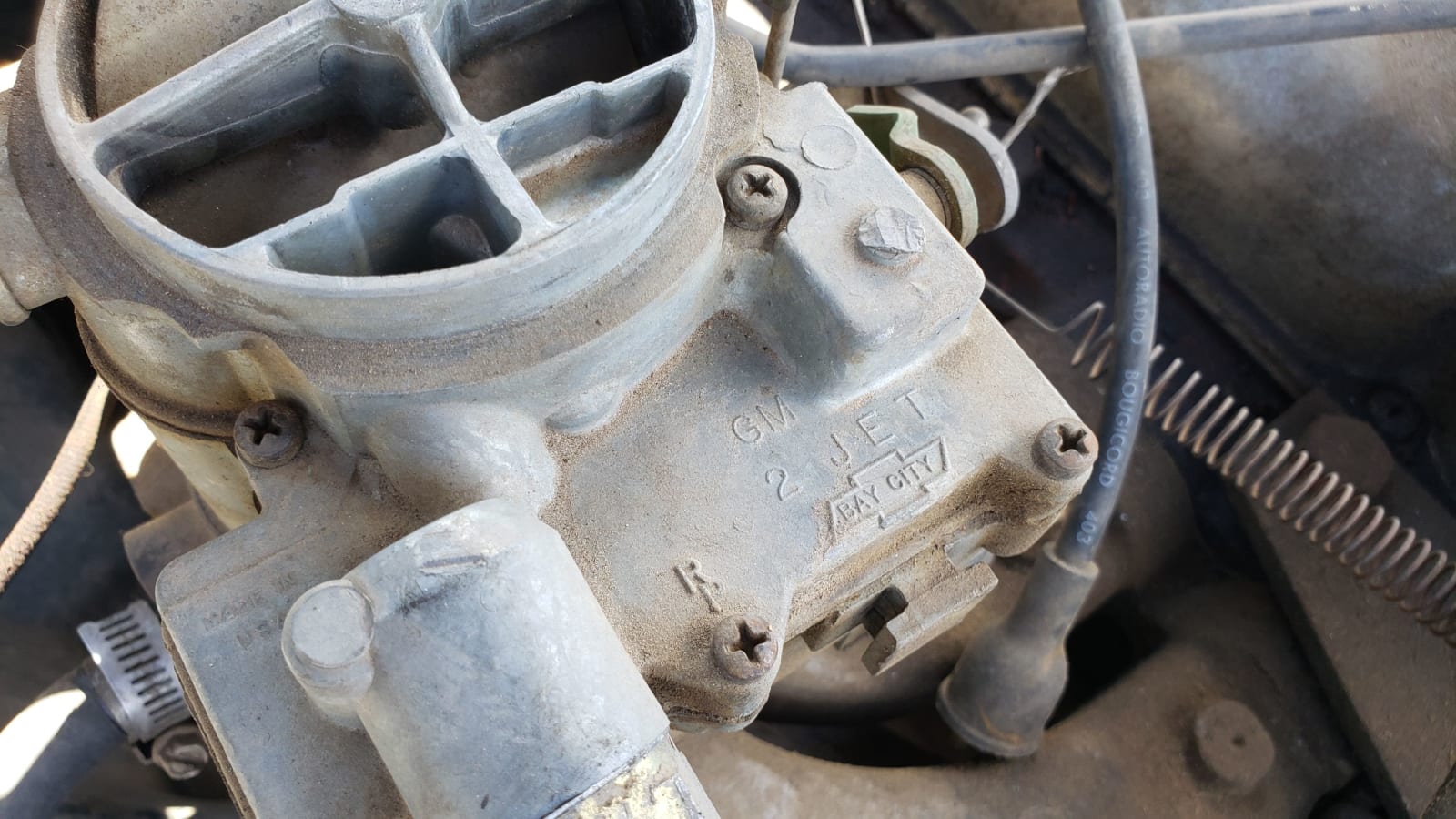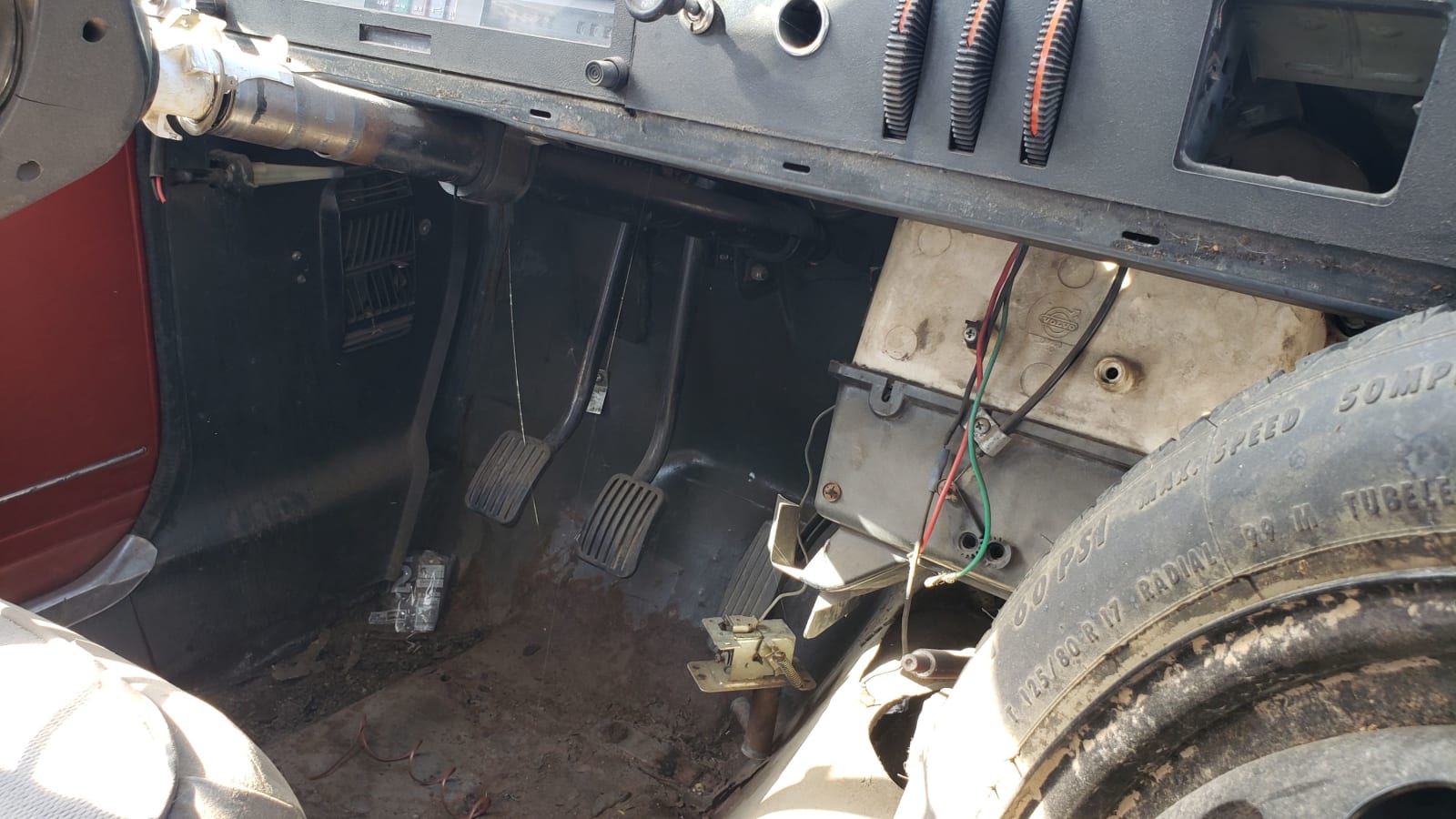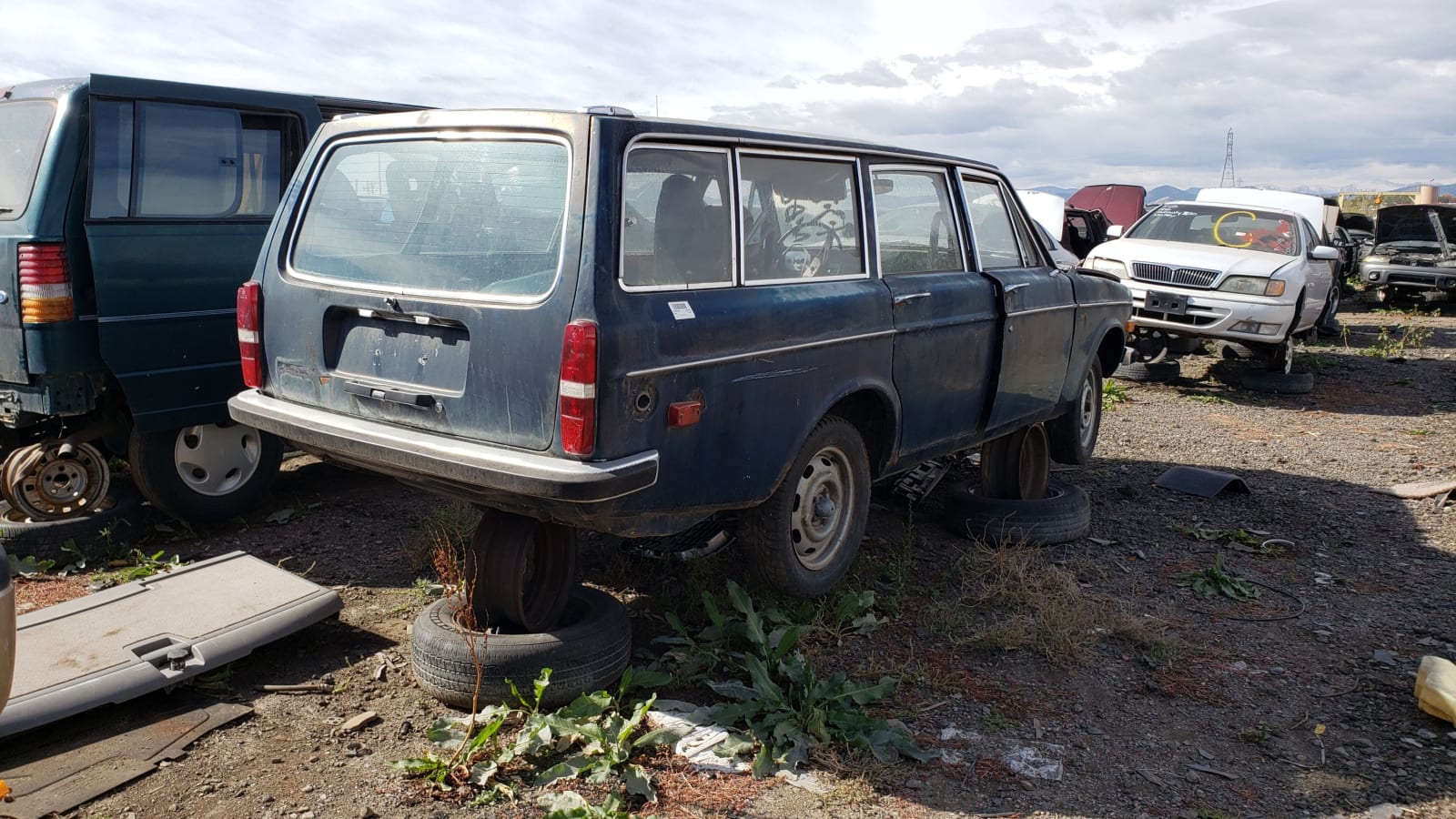Volvo managed to sell the 1940s-design PV544 and its 1950s-design Amazon descendant all the way into the mid-to-late 1960s in the United States, but those iconic machines were replaced here by one that began a line of even more iconic Volvos: the 140 Series. Starting with the 1968 model year, the 140 became available in the United States as a two-door sedan (the 142), a four-door sedan (the 144 and 164), and a station wagon (the 145). These rear-wheel-drive, brick-shaped cars later evolved into the 200 Series and its heirs, with the very last of the breed appearing here in the form of the 1998 S90/V90. That’s a lot of history all wrapped up in one vehicle, and so I was pleased to find this 145 in a Denver-area car graveyard earlier this month.
This car rolled out of Göteborg with a gleaming coat of Mörkgrön (dark green) paint and, according to this build tag, was built to California specifications. At some point, it made its way to Colorado.
Very few US-market cars had six-digit odometers prior to the middle 1980s, but Volvo felt optimistic about their cars’ longevity (at a time when reaching the magical 100,000-mile mark was something that rarely happened with non-Mercedes-Benz vehicles) and so now we can see that this car made it well past 200k miles.
The 2.0-liter pushrod four-cylinder engine in this car can trace its ancestry back to the Amazons, P1800s, and PV544s of the early 1960s, and it was rated at 115 horsepower. A six-cylinder version of the 140 sedan, known as the 164, could be purchased here as well (though it had few American takers).
But wait— what’s that Detroit-looking two-barrel carburetor doing on an engine that’s supposed to have a Stromberg 175?
Yes, it’s a GM-spec Rochester clone built at the ancient Bay City Plant (now known as GM Powertrain) in Michigan. Earlier Volvos came with a pair of British-made Skinner Union sidedrafts, which could be pretty painful to keep working right, but perhaps even the less-oddball Stromberg proved too much hassle for whoever installed this carb (which was meant to go on engines with much more displacement than a Volvo B20).
Transmission choices in the 1969 140: a four-on-the-floor manual or a three-speed automatic. This car has the manual.
The interior is pretty thrashed, as is usually the case with the 140s I find during my junkyard explorations. These cars had (and have) a fanatically devoted following in America, and a surprising number are still being driven every day here.
The 140 stayed on sale here through the 1974 model year, after which it was replaced by the 200 Series. If you think this view of a 1969 145 looks a lot like the same view of a 1979 245, you’re right; the 240 was more or less the same car as the 140 from the A pillars back (and it was built all the way through 1993).
The stories this car could tell!
How are we going to get mobilized if we can’t even get out of the parking lot?
Here’s another batch of Volvo 140 ads from around the world.
Related Video:
Source: www.autoblog.com

